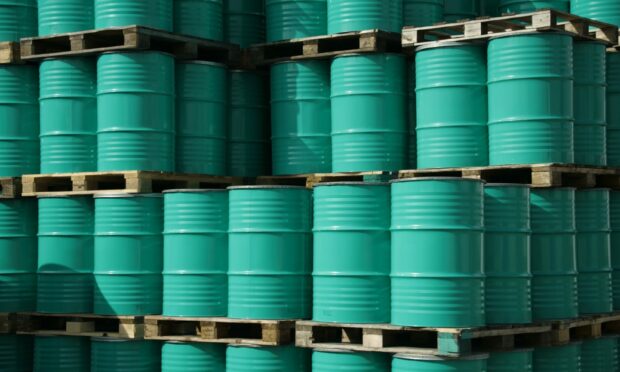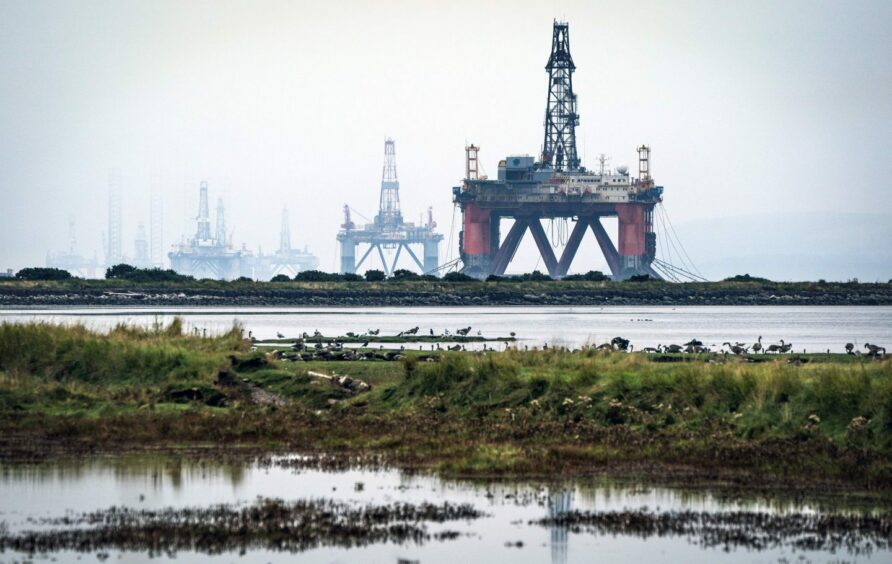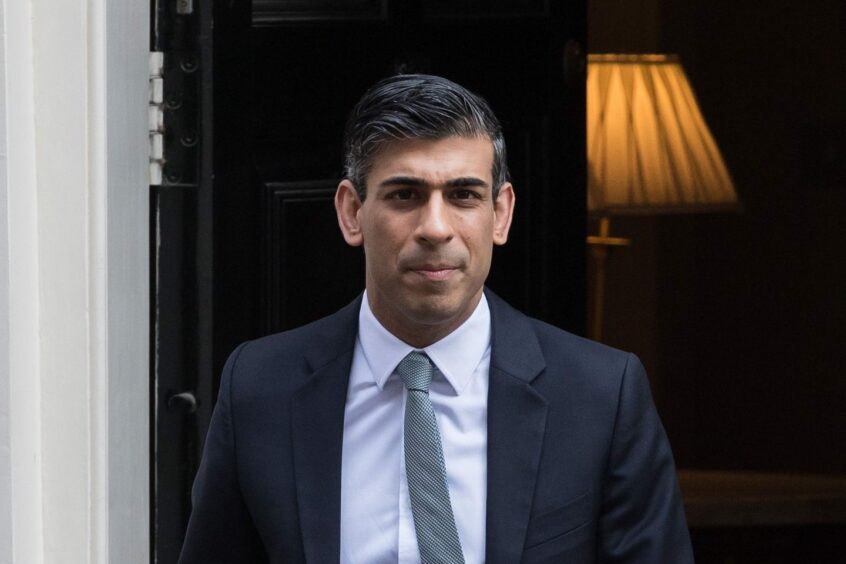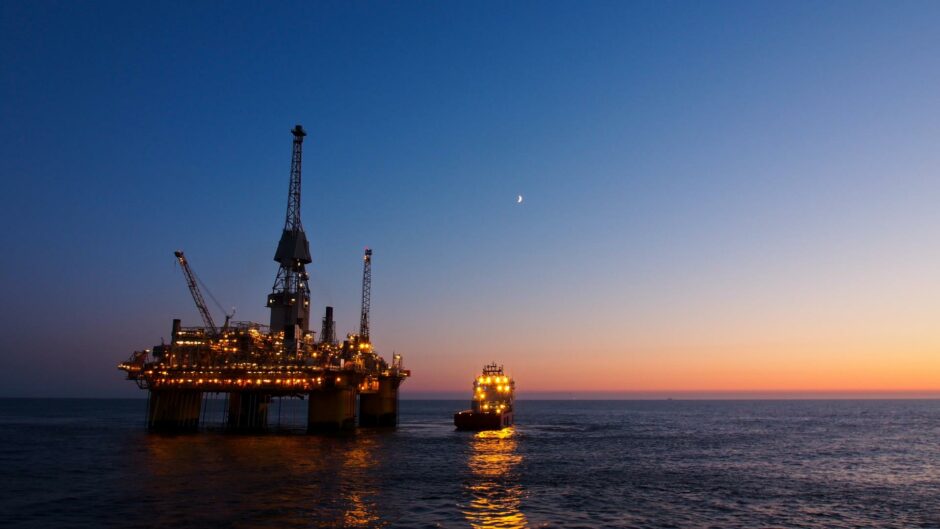Millions of barrels of oil and gas could be left in the ground as North Sea firms tailor their plans to the UK’s “uncertain” tax regime.
And while that will be music to the ears of some, Offshore Energies UK (OEUK) says a decline in domestic production will simply increase the need for “costlier, less reliable and higher carbon imports”.
In its business outlook report for 2023, released today, the trade body warns that a mix of windfall taxes and political uncertainty is driving away billions of pounds of investment.
That includes the cash needed to finance the energy transition, as well as that required for maintaining North Sea oil and gas production.
Investment at an ‘all time low’
Figures previously released by OEUK show nine out of 10 North Sea operators are scaling back their spending – with Westminster’s energy profits levy (EPL) the main rationale – and today’s report finds new investment is “at an all-time low”.
Among the operators to have publicly announced cutbacks to their plans are Harbour Energy, TotalEnergies and EnQuest.
That reduction in spend means the UK’s potential oil and gas resources have immediately been downgraded, with 500 million barrels now unlikely to be produced, the report claims.
Of those 500 million barrels, half of them have simply been removed from company plans, while the rest have been downgraded from ‘probable’ to possible, giving them a less than 50% chance of progressing.
That is enough to support the nation’s energy needs for six months, or the same as one year of North Sea output.
Ross Dornan, OEUK’s market intelligence manager, who led the team that wrote the annual report, says it is “the most challenging and complex outlook” he has come across during his six years working on the study.
Scope to bring them back into play
He said: “Within the oil and gas space, we’re 500 million barrels poorer. What we see generally is about £10 to £12 per barrel in terms of development cost in the North Sea, so I think you can quite easily say that there’s some £3 billion to £5 billion of potential investment that is at stake.
“But we’re also seeing real inflation within this, so it’s quite hard to reconcile the loss of investment against the higher costs of investing. Overall, we see cost growth within the barrels that still could be produced, and we’re balancing that against the potential loss of investment from other barrels.
“This situation is recoverable. Action to rebuild investor confidence will help the ability of companies to finance projects, and that could bring these barrels back into consideration.”
Pleas for a price floor
Westminster’s North Sea windfall tax has dominated industry discussion since it was first mooted around a year ago.
Formally announced by the government in May, before an escalation in November, the EPL means oil and gas producers now pay a headline levy of 75% – cash raised goes towards cost-of-living crisis initiatives.
Many renewables generators face a similar windfall tax, rated at 45% on “extraordinary profits”.
Both policies will remain in place until 2028, even if energy prices drop to more normal levels, though there is optimism a price floor is in the works.
Mr Dornan said: “What we want is as competitive an investment climate as possible in the UK; that’s good for energy financing and, ultimately, the wider economy. We are aware of the reports of a potential energy security day on Thursday, and action to boost the UK’s resilience.
“We have been calling for measures to increase investment – in clean energy and oil and gas – for quite some time, and that includes asking for a pricing mechanism; we hope that will be reflected on Thursday. Everyone wants to see more investment in the UK economy, a more resilient energy system and lower emissions.”
UK still beholden to oil and gas for the minute
Despite the ongoing build out of renewables in the UK, the OEUK report shows that reliance on oil and gas has actually increased.
According to the study, in 2020 the nation got 73% of its total energy from hydrocarbons, rising to 75% in 2021, and 76% last year.
At the same time, the UK’s energy imports bill topped £100 billion for the first time ever in 2022, with the natural decline of domestic oil and gas output playing a part in that.
OEUK is warning that a continued lack of investment “could lead to overall production falling by as much as 15% a year by 2030, so output in 10 years will be 80% less than now”.
Rays of good news
There is cause for optimism though, and the report finds that offshore operators and supply chain companies are rapidly moving to embrace green technologies.
Between now and the end of the decade, OEUK forecasts North Sea spend of £200 billion, a large chunk of which will be on low carbon projects.
However, that figure is far from a given, the trade body is warning, particularly if the UK’s investment landscape remains unchanged.
OEUK’s chief executive, David Whitehouse, said: “The windfall levies are driving investment out of the UK. The total tax rate for offshore oil and gas operators is now 75% – three times that of conventional UK business. When prices fall, as is already happening, the ‘windfalls’ will disappear – but the tax will remain because it is locked in place till at least 2028.
“That makes these taxes a deterrent for investors. The same issue applies to offshore wind operators who face a similar windfall levy. Together these levies risk turning the North Sea, which should be the bedrock of the UK’s energy security, into an unattractive place to invest. Some projects will proceed but not the number we need for our energy security and jobs.
“Our industry is committed to helping the UK reaching its target of net zero by 2050 but our policymakers should remember that this is a huge and costly enterprise. The Office for Budget Responsibility costed net zero at £1.4 trillion in 2020 prices – of which more than £1 trillion will have to come from the private sector. We need fiscal policies that attract those investors.”





